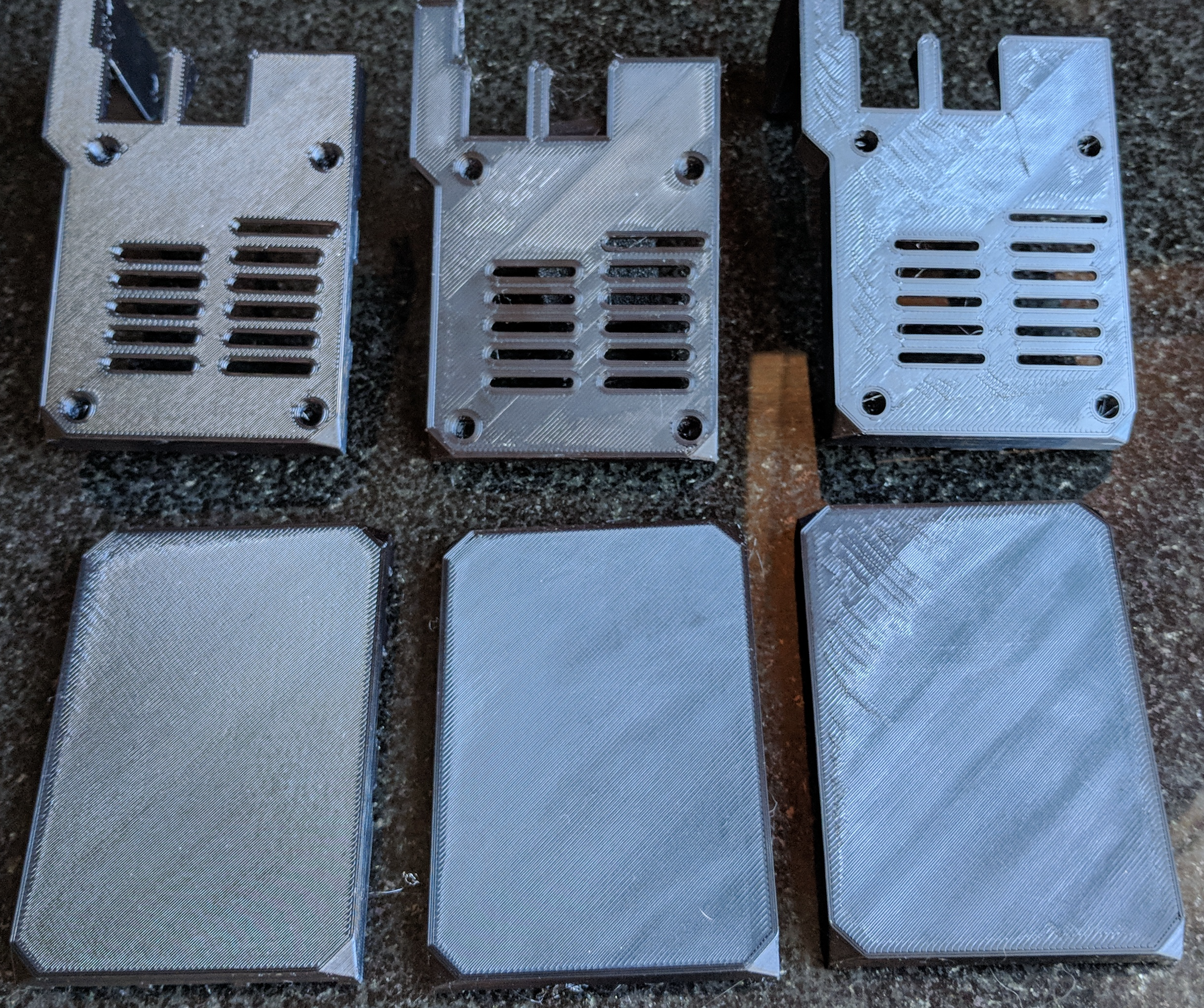Printing speed vs quality
I've noticed that print quality appears to be dramatically affected by printhead velocity. I'm using the Simplify 3D with it's new (~20180118) profile "Prusa Research Original Prusa i3 MK3." Mk3 firmware=3.1.1 RC5 B150. With the default settings, the printhead moved so fast on the first layer that it didn't stick everywhere and dragged strings around. The original print speeds were
I slowed them down to
and the results were the best prints I've seen so far. Smooth surfaces. No mistakes. I tried speeding it up 2000, but the results weren't as good.
In the image below, you can see three prints of this Rpi3 case. Each column shows one print of a case top and below it, the matching case bottom. The rightmost top/bottom pair were printed with 2000mm/min. The two leftward pairs were printed at 1000 mm/min.
Notice the striations on the rightmost pair in the upper left of the case top and bottom: NW/SE diagonal lines of uneveness. Not the NE/SW lines of the print path that is present in all of the prints. Those striations aren't present in the left and middle pairs that were printed at 1000 mm/min.
But even with that small issue, all of these slow prints are much, much better than the normal, much faster settings. There are many fewer defects.
Questions:
I hope these results help others. I've asked a bunch of questions, so please feel free to answer any one you like by number.
Re: Printing speed vs quality
Printing large flat 1st layers, I have reduced the effect you show by raising Z, but it's been a battle between sticking and Z height - almost like I want a lower Z for the 1st layer perimeters than for the fill.
I will try slowing it down next time I have a large flat print.
Also, it will be interesting to see what happens with this on the textured powder coated beds when they are available. I expect much of the problem might go away.
Re: Printing speed vs quality
I see that you are using firmware RC5 (150) - as I understand it, Linear Advance (LA) is still disabled in that version.
LA is experimental disabled to try get OctoPI/Octoprint working without layer shifting and get a more stable communication via USB.
If you are printing directly from SD card/FlashAir and not using USB, you could try firmware version 143 (not 143e) - this is the last firmware with LA enabled. I use this version and it works great.
LA regulates filament pressure in the extruder to give correct flow dependent on the current speed. This makes it possible to print at higher speeds (50-100%).
Without LA prints get better with lower speeds.
Have a look at my models on Printables.com 😉
Re: Printing speed vs quality
Slower print speed will always give better quality in FDM. It's inherent to the process. The default settings for most printers are trying to strike a balance between fast printing and high quality, so slowing things down will usually lead to noticeably better prints.
This doesn't have anything to do with Z calibration. It's because when you print slower there's less vibration, it's easier to synchronize the motion of the axes, etc.
The printer already matches extrusion speed to print speed (think about it--if it didn't then there would be no extrusion consistency, because every time the printer sped up or slowed down the amount of extrusion wouldn't change). So speeding up or slowing down extrusion always means speeding up or slowing down the print speed more generally. However, extruding more slowly may lead to better quality since it leaves more time for the melted plastic (which is fairly viscous) to flow properly.
